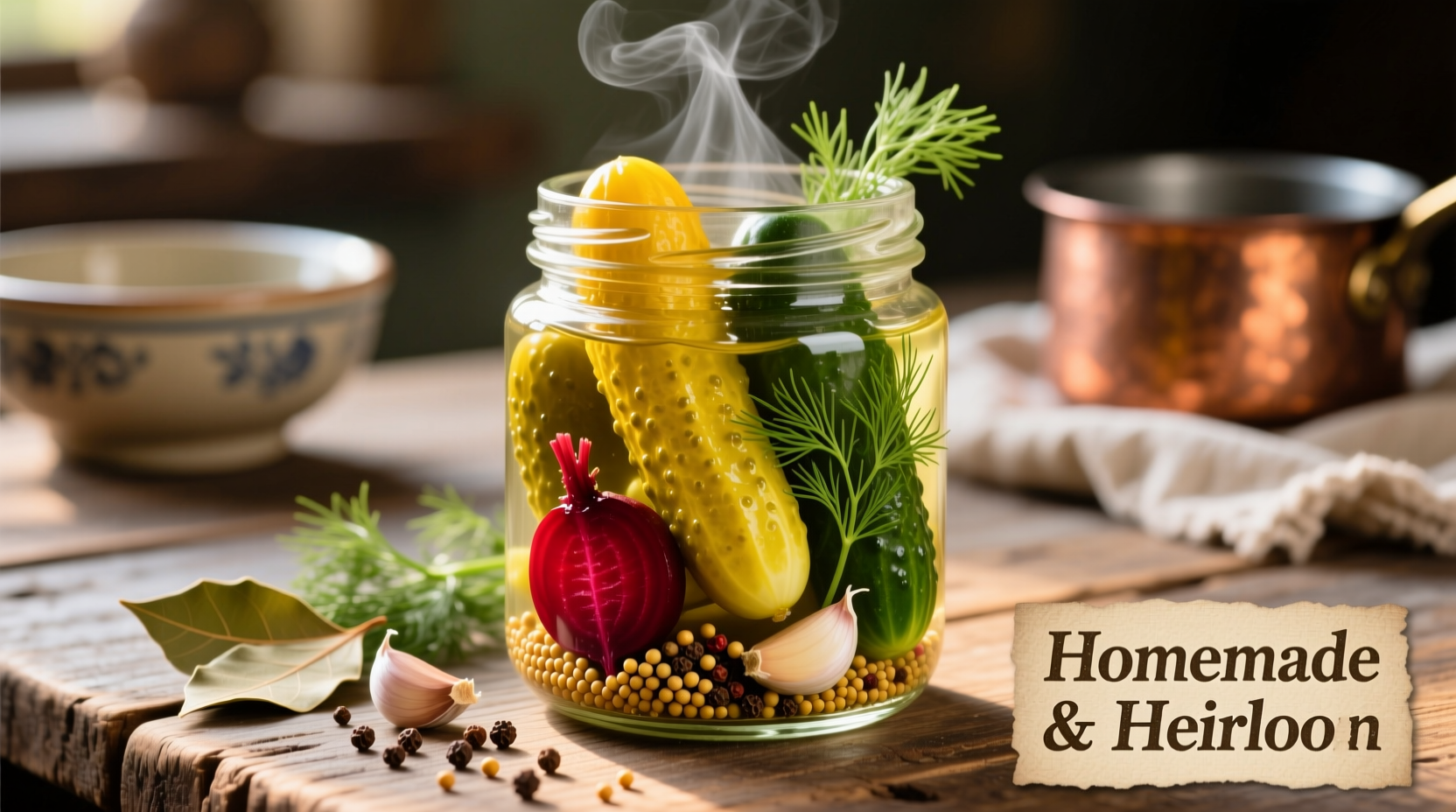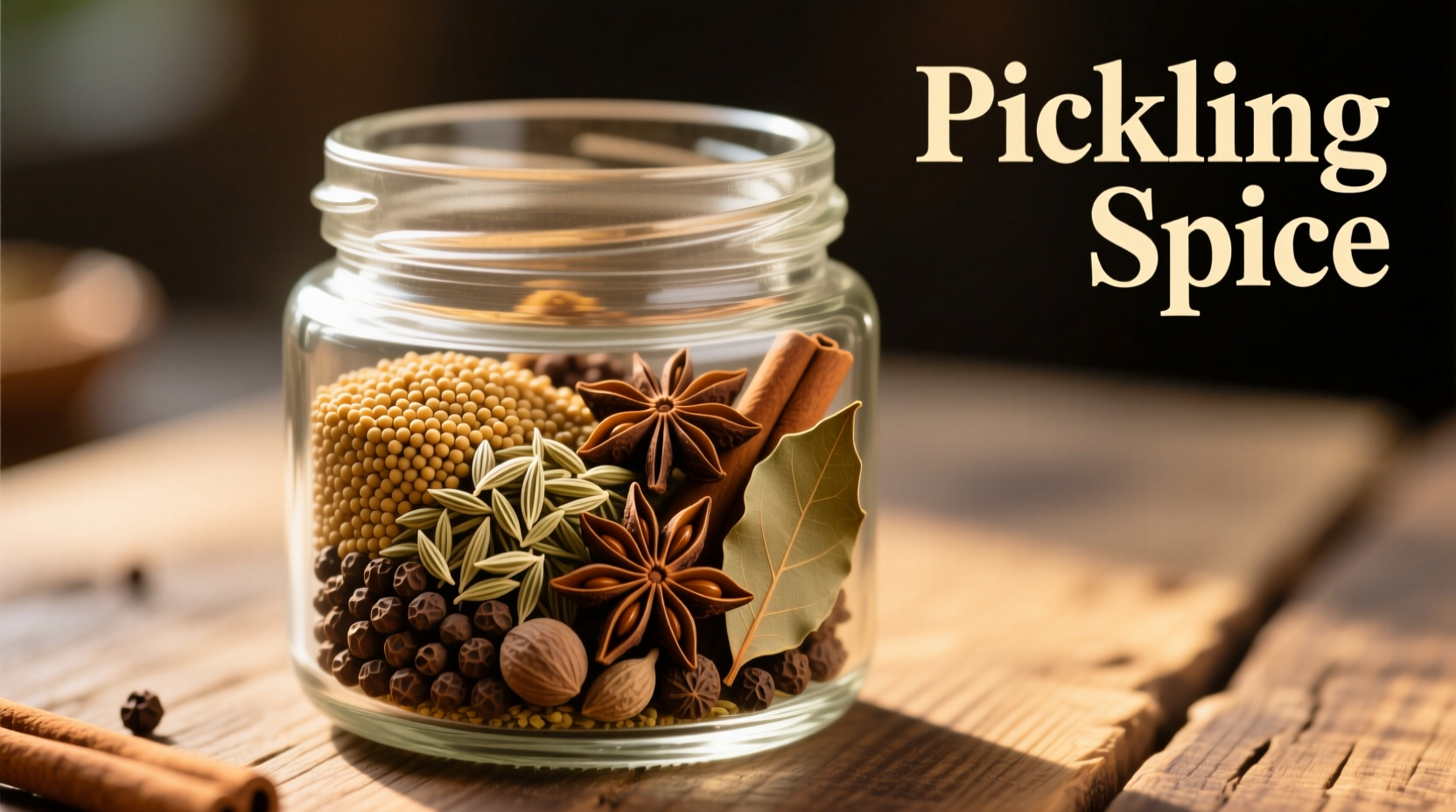Understanding Pickling Spice: More Than Just a Flavor Boost
When you ask what is pickling spice, you're exploring a culinary tradition that spans centuries. Unlike regular spice blends designed solely for flavor, pickling spice serves a dual purpose: enhancing taste while supporting the preservation process through antimicrobial properties and flavor stability. Home canners and professional chefs alike rely on this specialized mixture to transform ordinary vegetables into shelf-stable delights with distinctive character.

The Essential Components of Authentic Pickling Spice
While recipes vary by region and personal preference, authentic pickling spice contains specific ingredients chosen for their functional properties in the preservation process. Each component contributes not just flavor but also helps maintain texture, color, and safety of preserved foods.
| Spice | Primary Function | Flavor Contribution | Preservation Benefit |
|---|---|---|---|
| Mustard seed | Emulsifier | Sharp, pungent | Prevents separation of brine components |
| Coriander seed | Flavor enhancer | Citrusy, floral | Maintains vegetable texture |
| Black peppercorns | Complexity builder | Sharp, woody | Antimicrobial properties |
| Allspice berries | Flavor unifier | Warm, sweet | Preserves color integrity |
| Bay leaves | Aromatic base | Earthy, herbal | Prevents spoilage organisms |
Historical Evolution of Pickling Spice Blends
Pickling spice has evolved significantly from its ancient origins. Understanding what is pickling spice made of requires examining how preservation needs shaped its composition over time:
- Pre-1600s: Early preservation relied on single spices like mustard seed or horseradish, documented in USDA historical food preservation records as essential for preventing spoilage before vinegar became widely available
- 1600-1800s: European colonists combined Old World spices with New World ingredients, creating the foundation for modern American pickling blends according to the National Center for Home Food Preservation
- Early 1900s: Standardized commercial blends emerged as canning became popularized through USDA extension programs
- Modern Era: Regional variations have flourished, with craft producers creating specialized blends for specific vegetables and flavor profiles
When to Use Which Pickling Spice Blend
Not all pickling spice works equally well for every application. Understanding the difference between pickling spice and regular spices is crucial for successful preservation:
Vegetable-Specific Applications
- Cucumbers: Use blends with higher dill content and reduced allspice for classic dill pickles
- Beets: Opt for blends with additional cinnamon and cloves to complement earthy flavors
- Onions: Choose milder blends with increased coriander to prevent overpowering delicate flavors
- Beans: Use robust blends with extra mustard seed to maintain firm texture
Preservation Method Considerations
For water bath canning, use whole spices rather than ground to prevent cloudiness. When making refrigerator pickles with shorter shelf life, you can experiment with ground spices for more immediate flavor infusion. The National Center for Home Food Preservation recommends against using ground spices in traditional canning due to potential sedimentation and texture issues.
Creating Your Own Perfect Pickling Spice Blend
Learning how to make your own pickling spice gives you control over flavor profiles and quality. Follow this professional approach:
Basic Homemade Pickling Spice Recipe
This versatile blend works for most vegetables and yields approximately one cup of spice mix:
- 2 tablespoons mustard seed (yellow and brown)
- 2 tablespoons coriander seed
- 1½ tablespoons black peppercorns
- 1 tablespoon allspice berries
- 1 tablespoon whole cloves
- 6 bay leaves, crumbled
- 1 teaspoon red pepper flakes (optional)
Professional Preparation Techniques
To maximize flavor in your homemade pickling spice recipe, follow these chef-recommended steps:
- Dry toast spices: Heat whole spices in a dry skillet over medium-low heat for 2-3 minutes until fragrant
- Cool completely: Allow spices to cool to room temperature before mixing
- Store properly: Keep in an airtight container away from light and heat
- Use fresh: For best results, use within 6 months (spices lose potency over time)
Avoiding Common Pickling Spice Mistakes
Even experienced home canners make errors with how to use pickling spice mix. Steer clear of these pitfalls:
- Using pre-ground spices: Whole spices maintain flavor integrity throughout the canning process
- Over-packing spice bags: Too much spice creates bitter, overpowering flavors
- Ignoring regional variations: Different vegetables respond better to specific spice ratios
- Storing improperly: Exposure to light and moisture degrades spice quality rapidly
Advanced Applications for Pickling Spice
Beyond traditional vegetable preservation, innovative cooks use pickling spice in unexpected ways that showcase the versatility of understanding what is pickling spice made of:
- Brine enhancement: Add 1-2 tablespoons to meat brines for complex flavor profiles
- Stock seasoning: Infuse pickling spice in vegetable or meat stocks for depth
- Vinegar infusion: Create custom flavored vinegars by steeping spice blends
- Spice rubs: Combine with salt and sugar for distinctive meat rubs
Frequently Asked Questions About Pickling Spice
Can I substitute regular spices for pickling spice?
Yes, but with important considerations. Regular ground spices lack the controlled release of whole spices in pickling spice. For best results, use whole versions of the core ingredients (mustard seed, coriander, peppercorns) in proper ratios. Avoid pre-ground spices as they can make brine cloudy and become bitter during processing.
How much pickling spice should I use per quart of pickles?
The standard ratio is 1-2 tablespoons of pickling spice per quart of pickling liquid. For stronger flavor, use muslin bags that can be removed after 24-48 hours. The National Center for Home Food Preservation recommends not exceeding 2 tablespoons per quart to prevent overpowering bitterness.
Does pickling spice go bad?
Whole pickling spice maintains potency for 6-12 months when stored properly in an airtight container away from light and heat. Ground spices lose potency more quickly—within 3-6 months. Signs of degraded spice include faded color, weak aroma, and lack of flavor impact in finished pickles.
Can I reuse pickling spice?
While technically possible, reusing pickling spice is not recommended for canning due to reduced flavor potency and potential microbial concerns. For refrigerator pickles with short shelf life (2-4 weeks), you might get one additional use from the spice blend, but flavor will be noticeably weaker. Always discard spice bags after water bath canning.
What's the difference between pickling spice and canning spice?
The terms are often used interchangeably, but technically pickling spice is formulated specifically for vinegar-based preservation, while canning spice might include additional ingredients for fruit preservation. Pickling spice typically contains more mustard seed and peppercorns, while canning spice for fruits might include more cinnamon and allspice. For vegetable pickling, always use blends specifically labeled for pickling.











 浙公网安备
33010002000092号
浙公网安备
33010002000092号 浙B2-20120091-4
浙B2-20120091-4